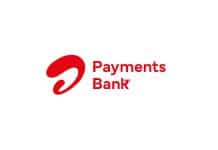Qlik has launched the general availability of Qlik Alerting, an intelligent alerting platform for Qlik Sense. Qlik Alerting delivers actionable, self-service and centralized alerting that enhances customers’ ability to proactively monitor their business data and take timely action based on insights.
“Qlik Alerting helps customers go beyond dashboards and analytical applications, creating the real-time intelligence loop needed to take action when it has the biggest impact,” said James Fisher, Qlik Chief Product Officer. “Qlik Alerting will allow customers to move from passive to active data consumption, extending the value of data by connecting the analysis of changes in data to immediate alerts and notifications sent downstream to users or other systems. The combination of Qlik Data Integration, Qlik Data Analytics, and now Qlik Alerting will provide customers with a full data intelligence lifecycle that drives actions.”
Organizations are looking to accelerate business value through data. However, that data is always changing, and sometimes critical insights are not identified until it’s too late. With Qlik Alerting, Qlik provides the ability to deliver real-time, data-driven alerts for immediate action, where and when it can make the most difference to business outcomes. Modern data analytics with Qlik encompasses the entire data life-cycle, from data preparation and integration (Qlik Data Integration), to AI-driven insights (Qlik Sense), to sharing and operationalizing findings (Qlik Alerting).
Unlike simple notifications based on visualizations, Qlik Alerting leverages Qlik’s Associative Engine to deliver context-aware alerting across the entire data set, bringing timely insights to business users when they need to act. Qlik Alerting includes sophisticated alert criteria based on advanced statistical calculation and trending, comparisons and percentage changes, nested logic, drill into dimension capabilities and more. It provides both self-service alerting and centrally managed, organization-wide alerts, delivered through email and a dedicated mobile app. And, it drives value by enabling customers to manage by exception and decrease “dashboard fatigue,” driving users directly to the right dashboards and analytics, with the right selections applied, for follow up and action.
Future enhanced alerting capabilities will include integration with workflow and robotic process automation (RPA) solutions through APIs that will further accelerate the value of customer data, as well as “proximity-based alerts,” where, for example, a retailer can automatically alert a regional manager with performance insights when they arrive at a store location.











